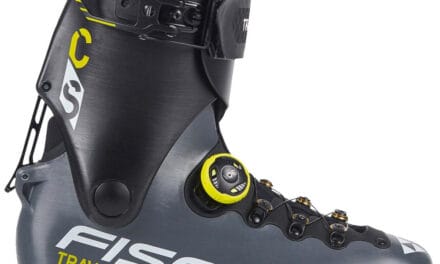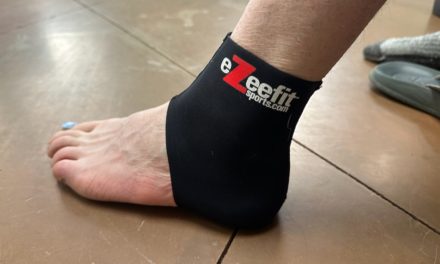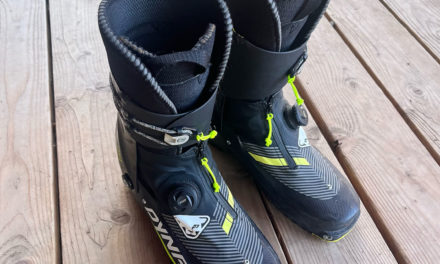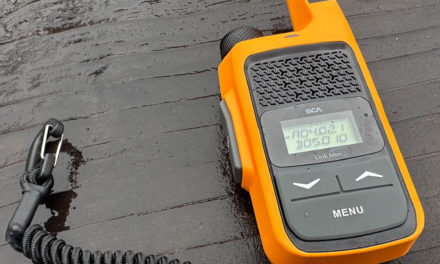What’s new in the ski touring world for next winter? After seeing some under-covered updates for next year about various new products that are coming next year, it seemed like a good time for THR to track down some information on these newdevelopments. Not only is it shiny new gear to look forward to, but I also see this as an opportunity to pick up soon-to-be discontinued and hopefully discounted products. Anyway, here’s what we know.
Dynafit
Blacklight Speed bindings and Blacklight boots.
The Blacklight boot gets a major overhaul for 25/26, taking design cues from the Ridge boot and packing them into a 1kg (ish) package. Interestingly, the Boa is left out for the new boot, instead using a ratcheting buckle for the instep that looks a lot like Jake Skeen’s modified Ridge we posted about a few weeks back. The new boot looks to ditch the tongue for even better walking and lower weight than the Ridge. Perhaps most notably, it is the lightest boot yet to feature the Hoji Lock mechanism, so it seems like a one-step transition will be possible here—the boot upper looks to be secured by a cam-buckle-equipped power strap with no hard buckles in sight.
A new binding with carbon fiber components is also rumored, but we haven’t heard more on this. We will keep you updated here as we learn more.
La Sportiva
Kilo XTR and Sender boots.
La Sportiva continues to update its boot line next year with two new models. The Kilo XTR takes an almost identical layout to the Kilo we are currently testing here at THR and adds a semi-rigid tongue to improve ski performance. The Kilo XTR will replace the Skorpius at a similar claimed weight of 1190g. This will be the third boot in the line built on the Kilo “platform,” including the ~800g Stratos Hybrid, the ~1100g Kilo, and now this. The features and fit should be similar to the Kilo as described here by Jason, but the tongue should make the flex more progressive and stiffer while adding some resistance in walk mode and providing more lower foot wrapping (good for performance, bad for high insteps?). For those who disliked the shift to Boa in the Skorpius 2, the Kilo XTR seems like a step in the right direction.
The Sender is a four-buckle, Gripwalk equipped, 1490g (claimed) freeride touring boot that should compete with the likes of the Scarpa Quattro Pro and Dynafit Tigard and replace the Vanguard. Like the Quattro Pro, the Kilo XTR features a four-buckle design with an overlapping upper cuff and a plastic tongue. The weight is in the mix with the Quattro as well, it will be interesting to see how the fit compares as the Quattro’s low volume and the Tigard’s high volume leave a lot to be desired by the folks in the middle.
After some years of writing off La Sportiva’s ski boots, we have been impressed with their latest designs, such as the Kilo, Skorpius, and Stratos Hybrid. The XTR and Sender seem like worthy additions that continue Sportiva’s quiver of middle-of-the-road fitting, high-performing touring boots.
Blizzard
New Zero G 88 and 96. After many years of steady but minor updates to the Zero G line, the skinnier Zero G’s get a fulloverhaul next winter. The previous 85 and 95 were standard bearers for traditional, lightweight skis that were more intuitive and forgiving than expected but had impressive performance in steep and firm terrain.
Like the new Atomic Backland skis, Blizzard is advertising a move away from carbon fiber (not entirely, but less of it). Instead utilizing a more complex wood core structure with poplar, paulownia, and a central ash insert underfoot. The carbon drive construction that was a hallmark of the previous Zero G line is not mentioned in the marketing materials. Carbon drive is a plate that wraps the core and extends in front of and behind the bindings a ways, going edge to edge and providing lots of torsional rigidity. The carbon drive was downsized over the years to make the Zero G’s more accessible; perhaps it is gone now?

The 105 gets a topsheet update, otherwise, it remains the same build. Dimensions: 133-105-120 mm S: 164, 172, 180, 188 cm W: 3080 g/pr @ 180cm
The new Zero G also advertises a multi-radius construction. We have seen this implemented before by Volkl and others. Straighter underfoot, more sidecut in the tips and tails. The new skis list similar turning radii to the previous models (the old ski’s radius varied with length). Looking at the shapes, the most notable difference appears to be more taper in the tail. There’s no word/photos of the rocker profiles yet, but I wouldn’t expect much change.
The 96 and 88 both now have a women’s specific model, with a softer flex and shorter lengths available. According toW2W (Women to Women) leader Leslie Baker-Brown, all but the most aggressive female testers preferred the softer flex. The new models come in 80-100g heavier per ski than their predecessors.
Fischer
After a long tenure, the Travers boot enters the modern era. One of the early models in the modern ~1 kg category, the previous Travers was my first truly lightweight boot and had some worthwhile and unique features. I remember it having a soft flex, and as I’ve ranted about before, I disliked the velcro upper buckle/strap. Perhaps the best feature of the old Travers was the brass bushings that the boa cable rode on—it made for low-friction easy-snugging of the forefoot compared to the more common plastic guides.
The new Travers seems to be a refined take on the old model—evolution not revolution. The most notable change seemsto be the more sculpted, angular scaffo and cuff, which are more in line with the Transalp boots in the current line. The claimed weight is 1060g, a 15g savings from the previous model.
















Thanks, Gavin! Any news related to boot offerings for us wide/high volume footed folks (I’m talking non-50/50 touring boots like the Dynafit Radical Pro)? Any word on if 3D printing will be an option in the near future?!
The backland XTD seems to be the best thing going for the wide/high volume and relatively light market.
As far as 3d printing, I have seen and heard of 3d printed prototypes, but they seem to struggle with long term dimensional stability (the prototypes shrink and warp as they absorb water/humidity) and more broadly issues with layer adhesion and such.